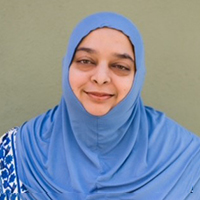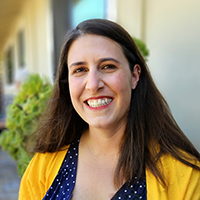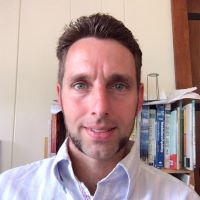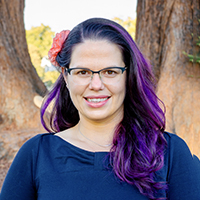The Spectrum of “Our Why?” behind CASE and DEI
By CASE Diversity, Equity and Inclusion Committee: Bree Barnett Dreyfuss, with Nishat Alikhan, Reuben Medlock, and Tara Sikorski
With the start of spring comes a wide range of new topics of conversations and wonderings from students. For a week or so my children were obsessed with the lore of Groundhog Day, debating if the American groundhog was better than the original hedgehog or badger. My high school students, on the other hand, are debating which dress to wear to junior prom, whose shoes have more drip or rizz, wondering which classes to sign up for next year, and trying to figure out which college to go to.
While our students are wondering about such things in the spring, teachers are trying to figure out how to rearrange their lesson plans with the different bell schedules for mandatory testing, worrying about pink slips in mailboxes, watching for job openings to post, and waiting for budgets to update for spend-down ordering. In this time of extra stress, when we still have to do the regular part of our job, it can all seem like a lot. Because it is.
No matter our experience level, and no matter our path to teaching, remembering our motivation for teaching can help ground us when the going gets tough. We asked a few of our CASE Diversity, Equity, and Inclusion (DEI) Committee members what motivated them to become a science educator, and why they chose to spend some of their precious time volunteering with CASE.

Nishat Alikhan teaches 7th grade science at New Roads School in Santa Monica and says she chose to be a science teacher because she believes “every child is capable of learning and it is our job to figure out how they learn and apply that knowledge to our classrooms.” For students who may not have equal access to information or education, Nishat continued, “Science, in particular, is very important for students to understand because it is the way we understand what is happening around us and how to think critically, ask relevant questions, and evaluate responses, sources, and solutions.”
It is this motivation to provide her students with the skills needed to do science that led Nishat to join CASE in the first place, and eventually to volunteer on CASE committees. Nishat said she chose to join CASE because she believed that “quality Science education is a right, not a privilege, and CASE is working to enshrine this in schools across California. I wanted to be part of the work, to be able to learn and share that learning with others. As part of CASE, I served on the Publications committee and then on the DEI committee. The DEI committee is where I found my passion and my purpose. As a member of the CASE DEI committee, we have important conversations about what DEI can look like in the classroom, how to make our labs more accessible and inclusive spaces, and what benefits our young scientists.” Nishat now serves as our DEI Committee Co-chair and shares her passion and calm leadership style with our group.
While it seems counterintuitive, being involved in a professional organization like CASE and being on a committee, can actually save teachers time in the long run. Our CASE community offers a unique opportunity to talk with other science educators, work together on our pedagogy, and share our best practices. Collaborating helps lighten the load by sharing the work, vetting resources, and sharing the best of what we find. Teacher-to-teacher sharing of lessons and pedagogy strategies outside of your district allows you to “think outside the box.” It’s an opportunity to hear about new and different ways to teach, to learn about new activities and labs for your students to experience, and even to make new teacher friends.

“I always wanted to teach science,” says Bree Barnett Dreyfuss, a physics teacher at Amador Valley High School in Pleasanton, “then I found physics and knew that’s what I wanted to teach.” Bree says she wanted to share her excitement about physics with students and talking with other teachers about how they teach helps her be the best teacher for them that she can be. “Getting together with other physics teachers is one of my favorite things. It’s like finding someone else that loves the same Indie record no one else has heard of but you. It’s as if I’ve doubled or tripled the size of my department. I can pick and choose the teachers I know to talk to depending on what I want to spend more time learning about, where I need help or want to grow.”
Some science departments or course teams are small; CASE offers the opportunity to network with other teachers and build relationships beyond your district or school. For Bree, joining the DEI Committee gave her that opportunity, “I’d been on several iterations of working groups in my district focused on more equitable grading practices and policies but nothing ever got much traction. I really enjoyed the conversations with other CASE DEI Committee members; all science educators from different areas and different backgrounds, who had taught at different levels. Everybody was focused on what was best for students. Everything was student-centered and how to get the best practices to more CASE members. It really felt impactful.”

Some teachers transition out of the classrooms to have just that kind of widespread impact, to reach more teachers and ultimately more students across their district. Reuben Medlock is a Teacher On Special Assignment (TOSA) in Secondary Science & Mathematics, in Oceanside Unified School District. For Reuben, he feels the common “bank system of education” continues to support the inequities and underrepresentation of some student groups in science. Such a systemic change would require adjustment at all levels, “We must change this pedagogical shift to be asset-based and student-centered learning, through teachers having difficult discussions in meaningful ways. Professional development and involvement in teaching communities become critical at ALL levels in the educational realm. That is why I joined the committee of DEI to be a part of the communication and action within CASE.”
To Reuben’s point, professional learning keeps our skills sharp and introduces us to new ideas and pedagogies that we can bring back to our classrooms and adapt to our content. For many members of the DEI committee, CASE provides that space of learning. With the support of a broader network of science educators, we can find the strength, inspiration, and skills necessary to push the boundaries of our own practice.

For Tara Sikorski, Science Coordinator and DEI Committee Co-Chair, she was drawn to CASE, then CSTA, because of the amazing professional learning opportunities. “Many years ago, I attended my first science teacher conference and I was hooked. I remember leaving that weekend with a full brain and yet still wanting more. Now 20 years into science education, when I attend the CASE Science Conference it is like an amazing family reunion where I get to see, connect, and learn with other educators from across the spectrum of my career.”
Being a part of CASE not only provides access to a diverse group of science educators that you can collaborate with and learn from, and it also means they all get access to you. I know that despite spending our days in front of kids all day, the thought of sharing wisdom and expertise in front of a bunch of other adults is enough to send us running for the door. Trust us, it’s not as scary as it seems and our colleagues in CASE are an amazing audience.
The CASE Science Conference is a great opportunity for you to support your “why” for science education and share the wealth of knowledge and expertise that you and your students bring to the California science educator community. So, we encourage you to let the CASE California Science Education Conference be the space for you to push your boundaries and try presenting to adults! You never know who you might inspire and fuel their why.
The next CASE California Science Conference will be November 8-10, 2024 in Sacramento. We hope to see you there and get to hear about your why!
The article reflects on the diverse motivations of science educators and the benefits of professional engagement through CASE It highlights educators' passion for teaching science, their commitment to equitable education, and the value of collaboration in enhancing teaching practices. Through testimonials from educators, the article emphasizes the importance of networking, sharing best practices, and continuous professional learning.





